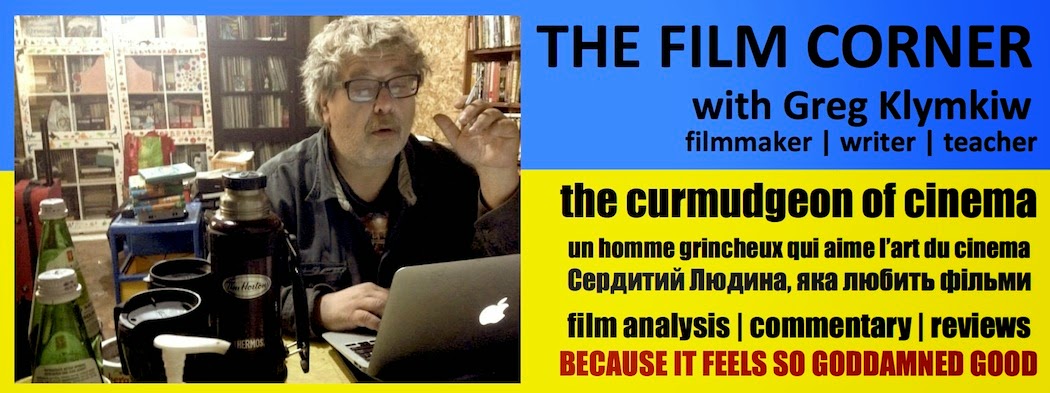Tarantula (1955) ***½
dir. Jack Arnold
Starring: John Agar, Mara Corday, Leo G. Carroll,
Raymond Bailey, Clint Eastwood
Review By Greg Klymkiw
They say the best science fiction is rooted in “good science”, a view with some merit, but I'd assert that the science should at least seem credible or, at the very least, reveal some sort of truth about the world and/or humanity as we know it. Such is the case with Jack Arnold’s Tarantula, the classic Universal Pictures big-bug picture.
Like his other legendary sci-fi thrillers: The Incredible Shrinking Man, The Creature From The Black Lagoon and, among others, It Came From Outer Space, the science is dubious, but the exploration of issues and themes which touch (or plague, if you will) all of us, even today, Tarantula is as much ahead of its time as it is a product of its time.
The theme of world hunger and the need to find ways to successfully address it is something that hangs over the picture with significant heft. The fact that this issue is something that plagued the world in the 50s, especially during America's post-war/cold-war prosperity within the McCarthy witch hunt hysteria, is what places Tarantula firmly in the pantheon of pictures that truly deserve their classic status. Set in a sleepy Arizona desert town, the resident doctor (played with characteristic stalwartness by the ex-Mr. Shirley Temple, John Agar) investigates the mysterious death of someone who was working as a researcher on the outskirts of this hot and definitely dusty Southwestern hamlet. The Doc suspects there’s more to this death than meets the eye, but his suspicions are ignored.
As these things go in 50s thrillers, the town’s sheriff prefers to believe the bogus diagnosis proposed by the head of the research lab, a respected local scientist (played with delectable aplomb by the venerable ham Leo G. Carroll). You see, the estimable old coot is trying to solve world hunger by making animals bigger - much, much bigger, actually - so that more flesh can be rendered from slaughtered beasts to fill the empty bellies of those without. He takes on a new assistant, a fetching, young female scientist (the drool-inciting Mara Corday) who not only provides him with ample support (in, uh, more ways than one), but is also an amorous target for Doc Agar.
When Doc Leo is exposed to the formula he’s been using on tarantulas, guinea pigs, bunnies and other assorted small animals, he himself slowly transforms into a crazed, deformed monstrosity whilst the increasingly mysterious deaths and disappearances in the vicinity are attributed to a tarantula who’s been chowing down a wee bit too much growth juice.
On the surface, Leo G. Carroll’s character is from a long line of mad scientists, but his obsession is not in any way tinged with self-interest. He's not seeking wealth or power. Doc Leo's goals are honourably altruistic. His suffering is all the more poignant because his desire to bestow good upon the world is a life’s work that ends his life and the lives of others. His failure – given that his experiments result in something destructive – is especially frustrating and finally, very moving – tragic, even.
The movie is replete with admirable qualities. The performances are all superb (within the framework and context of the genre) and the writing is more than serviceable. Though the screenplay doesn’t quite reach the transcendent heights of Richard Matheson’s work on The Incredible Shrinking Man, it does feature more than a few great lines of dialogue that are genuinely campy – genuine because they are INTENTIONALLY cheesy and NOT a result of being dated.
Most impressive are the optical effects involving the enlargement of actual tarantula footage. Clifford Stine’s work on the special effects is as effective as some of today’s best digital work. Sure, the effects occasionally fall short, but then, so do many digital effects these days. At least optical effects are infused with a warmth that's decidedly lacking in digital. Yup, even in the movies, it boils down to the grand old vinyl vs. CD debate. At the end of the day, we let the picture work its considerable magic.
One fun note of trivia is that Clint Eastwood appears in a tiny, but important role during the climax of the picture. It seems thoroughly appropriate that it is Eastwood who commands all his bombers to let rip and decimate the brick-shithouse that is the Tarantula. And, even more interesting, is that Tarantula’s fetching leading lady Mara Corday was cast years later by Eastwood as the wise-acre waitress who signals Harry Callahan that danger is afoot in her café in the now-almost-classic Sudden Impact.
Tarantula is an absolute must-see. It holds up admirably and will also provide great entertainment for the kiddies (of ALL ages). Most importantly, like all great sci-fi thrillers, it provides big emotions, food for thought AND one hell of a rollercoaster ride.
Tarantula is available in a superb box set of ten 50s classics entitled "The Classic Sci-Fi Ultimate Collection Volumes 1 and 2" from Universal Studios Home Entertainment.
Saturday 12 April 2014
TARANTULA - Review By Greg Klymkiw - Food, Glorious Food, Turns Tables and Seeks Food
Labels:
*** 1/2
,
1955
,
Big Bug
,
DVD
,
Greg Klymkiw
,
Horror
,
Jack Arnold
,
Science Fiction
,
Universal Pictures
,
Universal Studios Home Entertainment



